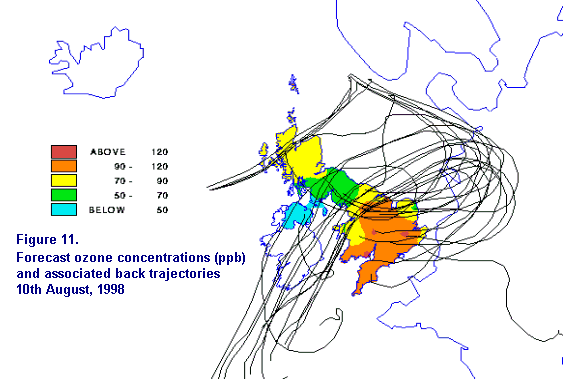1995 was an exceptionally hot summer - at Heathrow, for instance, there were 39 hours where a temperature of 30°C or over was recorded, compared with 11 hours in 1994 and none in 1993. These high temperatures and associated levels of sunlight led to a number of ozone episodes, and UK air pollution standards were regularly exceeded.


